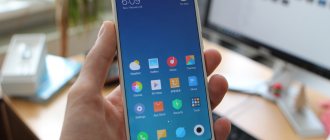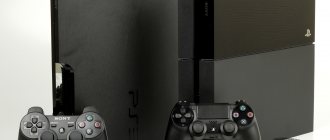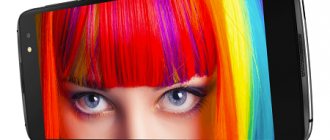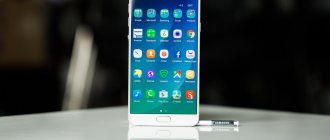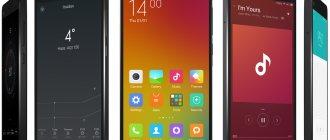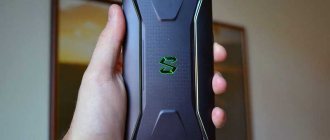Set
You can’t look at the packaging of absolutely any tablet without tears. Usually this is a cable and charging. No headsets, cases or any other similar goodies for you. No, I was lucky. I found a protective glass for the screen inside the box. I don’t know where it comes from, it seems like Xiaomi doesn’t engage in this practice. On the other hand, the Mi Pad 3 box was sealed. Maybe this is all the machinations of the cunning seller from whom I ordered the Xiaomi Mi Pad 3?
In any case, I suggest watching the unboxing video below.
The power supply, by the way, was 5 V and 2 A, which means that the device cannot be called fast charging. We will return to this later.
Screen
The Xiaomi Mi Pad 3 screen is one of the best in its class. Like Apple, the aspect ratio is 4:3. IPS technology provides maximum viewing angles, and the resolution of 2,048 × 1,536 pixels means no grid visible to the eye.
The protective glass and display are made without an air gap. There is no color inversion.
Unfortunately, the developers completely forgot about anti-reflective and oleophobic coatings. Fingerprints have to be wiped off regularly, and when the display is turned off, it is almost impossible to photograph without glare. But there are several software features related to the screen.
Design
Compared to the 2nd generation Mi Pad, it has not changed at all. The mi icon in the upper right corner disappeared and that’s it. The weight increased by 6 grams, but all other dimensions remained the same. The good news is that accessories from the previous generation are fully compatible with the new product.
I'll tell you what I liked and what I didn't. First, the good stuff.
The tablet is small and compact. He is so awesome that you almost always want to take him with you. Fortunately, the dimensions allow this. In winter, you can even put it in the inner pocket of a down jacket.
What's good about a tablet is that it has a large screen. Compared to a smartphone. Got it, unblocked it, and the entire Internet in all its glory is in front of you.
Moreover! Most applications look amazing on a tablet.
For example, the Telegram interface on the Mi Pad 3 screen is very thoughtful. On the left you have a list of contacts, on the right there is a field with chats. The same can be said about the VKontakte, Skype, and various email clients. The efficiency of working with all programs is much higher than on a smartphone. After all, everything you need is always before your eyes. There is no need to jump from one menu to another - everything fits on the screen at once.
Secondly, the 8-inch diagonal is, for my taste, the most comfortable. It does not turn the device into a hefty and inconvenient piece of board, which is not convenient to hold for a long time, and there is no particular place to put it. Maybe in a backpack or large bag.
Another point - the speakers. There are two of them, they are quite loud and of high quality. The most important thing is that they provide a stereo effect. But their location is not very good, because the speakers are located at the back. Thus, the sound does not come towards you, but on the contrary - from you.
If you cover the speakers with your palm, the sound will immediately “pump up”, since it will not go to the side, but will concentrate nearby, being reflected from the palm and somehow redirected in your direction.
Now about what I didn’t like about this tablet.
The base of the body is metal. It curves neatly at the back. This is an excellent solution, because the body fits comfortably in the hand.
But the flat glass and sharp metal edge are annoying. They are rough, the sharp corner slightly cuts the palm, in general, the positive impression is somehow blurred.
Bring 2.5D glass to tablets!
Since this is already the third generation of tablets from Xiaomi, the developers might have finally figured out to put a fingerprint scanner in their brainchild. I understand that a tablet is not a smartphone and you won’t unlock the device that often. Nevertheless, having a scanner is convenient, damn it!
Further. Where is the vibration feedback? I would like to press virtual buttons and feel a slight vibration inside the case. But it’s not clear whether he pressed it or not. This is especially true for the touch buttons below the screen. Thank you for at least providing some backlighting.
Apart from these nuances, Mi Pad 3 is good. There is no doubt that this is a good thing. The case is well assembled, the materials are of high quality, in general, we have before us the Chinese half-brother of the iPad mini.
Conclusion: a reliable assistant for every day
Despite the controversial processor and minor design flaws, the Xiaomi Mi Pad 3 turned out to be a stable device for every day.
The Mi Pad is not a shame to take out of a backpack in polite company; it does not look like an overtly Chinese craft, it has a high-quality build and works like a clock. However, like all the company’s devices this year.
Overall, the update was successful. Not least due to the cost of the tablet.
Now on the Chinese market Mi Pad 2 costs $240, the more successful and productive Mi Pad 3 costs $249 (promotional code Padgb3).
Of course, it’s difficult to compare this tablet with the iPad mini - different platforms, different capabilities. Thanks to global firmware, usage problems are eliminated - everything looks like it came from a local store.
And everyone makes their own choice of operating system.
Display
I already said that the 7.9-inch diagonal is ideal. I will only add that a resolution of 2048 x 1536 pixels is more than enough. The density of 326 ppi makes the picture beautiful, smooth, without pixel ladders. By the way, the density of dots in the iPhone 7 is exactly the same.
The protective glass has an oleophobic coating. It's clearly not the best I've seen or touched. Fingerprints still remain on the screen over time.
In general, we use an IPS matrix here. Moreover, from the viewing angles it is clear that it is of high quality. The picture is not inverted, it always remains exactly the same as at a right angle.
Unless at an extreme angle a whitish fog comes out.
The light sensor adjusts the brightness of the display. It does not work very adequately, perhaps it would be better to disable it. By the way, there is practically no brightness reserve. In bright sunlight, the screen goes blind.
Design and construction
The design and form factor of the gadget were inherited from its predecessor, the Mi Pad 2. However, this does not in any way affect the good reviews of the Xiaomi Mi Pad 3. The tablet boasts a carefully sandblasted aluminum body, which has excellent tactile and practical properties.
The new product has slightly added weight (328 versus 322 g for the previous model), with the same overall dimensions: 200.4x132.6x6.95 mm. This adherence to tradition is understandable - once they have created a convenient tablet shape, Xiaomi engineers are in no hurry to change it. Better an already familiar “classic” than a dubious “innovation”.
The Mi Pad 3 display has the same 7.9-inch diagonal, the USB Type-C port is in the usual place - all the best from the Mi Pad 2 remains in the Mi Pad 3.
Specifications Xiaomi Mi Pad 3
Many people are wondering - why buy Xiaomi Mi Pad 3 now when there is Mi Pad 2? Instead of answering, I suggest you look at the characteristics plate below.
| Xiaomi Mi Pad 2 | Xiaomi Mi Pad 3 | |
| Screen | 7.9 inches, 2048 x 1536 pixels, 326 ppi | |
| CPU | Intel Atom x5-Z8500 with 4 cores and a frequency of 2.2 GHz | MediaTek MT8176 @ 2.1 GHz (2x Cortex A72, 4x Cortex A53) |
| Graphics accelerator | Intel HD Graphics | PowerVR GX6250 |
| RAM | 2 GB LPDDR3 | 4 GB LPDDR3 |
| Data store | 64 GB | |
| Battery | 6190 mAh | 6600 mAh (5V, 2A) |
| Cameras | 8 MP (f/2.0, FHD video recording) and 5 MP (f/2.0) | 13 MP (f/2.2, FHD video recording) and 5 MP (f/2.0) |
| OS (at time of release) | Android 5.1 (MIUI 7.0) | Android 7 (MIUI 8.2 shell) |
| Connectors | USB Type-C, 3.5mm audio port | |
| Sensors | Accelerometer, light sensor, gyroscope, Hall sensor (for case) | |
| Networks | Wi-Fi (802.11 ac), Bluetooth 4.1, GPS, A-GPS | Wi-Fi (802.11 ac), Bluetooth 4.0 |
| Dimensions | 200.4 x 132.6 x 6.95 mm | |
| Weight | 322 grams | 328 grams |
| Available colors | Gold or gray | Gold on the back, black on the front |
The 3rd Mi Pad is a really upgraded version of the previous generation. Now there is a difference of 40 dollars between them. Against the background of a more powerful processor and an increased amount of RAM, I would not save. It just doesn't make sense.
I don’t perceive the lack of a radio module and, as a consequence, GPS (hello, taxi drivers!) as a disadvantage. The modern tablet has long turned into a bedside gadget that rarely leaves homes. In this case, there is no point in overpaying for a SIM card.
Hardware platform: reliability and simplicity
The main feature of the Mi Pad 3 is the six-core MediaTek MT8176 . It is built on an outdated 28-nanometer process technology, and operates at a maximum frequency of 2.1 GHz. The specifications of the graphics core are even more depressing - the PowerVR GX6250 .
The strange choice of platform is explained by compatibility issues. The previous version of the tablet used an Intel processor and had a lot of problems with unoptimized software.
MediaTek, chosen this time, may not break records (especially with such a screen resolution), but it has been tested by most developers, since it is the flagship solution of last fall specifically for tablets. The video accelerator used turns out to be more productive than the integrated Intel graphics.
In addition, the amount of RAM has doubled - from 2 to 4 GB. In addition, the modification with 16 GB of permanent memory has disappeared; now the tablet will only be available with 64 GB. Due to the lack of a slot for memory cards, this is a more than understandable and correct decision.
The configuration allows Mi Pad 3 to remain at the level of mobile processors Snapdragon 650 and Kirin 950. For an Android tablet, this is an acceptable result, ensuring the operation of all necessary applications and smooth rendering of the interface.
Performance
The best performance tests are 4K video playback and gaming. The device has no problems at all with the first one. Still would! Let's see how much it scores in the AnTuTu and Geekbench 4 tests and nod our heads approvingly.
As for games, I forgot a long time ago what it was like to play on a tablet. And this is a completely different sensation than on a smartphone. Large screen, comfortable grip, no compromises - a real thrill!
I downloaded World of Tanks Blitz, set the graphics settings to maximum and launched the game. The frequency never dropped below 28 FPS.
4K videos play perfectly smoothly.
In general, for all tablet cases there is a margin of safety. And in most routine tasks, even more so.
How many Mi Pad 3 scores in AnTuTu and GeekBench
In the Geekbench 4 test, the powerful Cortex A72 cores allow the Mi Pad 3 to score more than 1600 points in the single-core test. For comparison, Qualcomm Snapdragon 820/821 processors have similar results in the single-core test. In the multi-core test, he managed to score 3726 points. The graphics test gave 2100 points, which is slightly lower than the Snapdragon 650 and the Kirin 950. In AnTuTu, the Mi Pad 3 scores 80.618 points , which is also quite good for a tablet.
Cameras
Let's start with the rear sensor. Previously it was 8, now the resolution has increased to 13 megapixels. There are more pixels, but the photos are still far from ideal. Even smartphones in the category starting from 13 thousand rubles take better photos.
The rear camera shoots at the level of average devices from 2012-2013. Even for a 2020 tablet, this is not enough.
I wouldn’t say that this is a complete failure, but the manufacturer could install some more serious matrix and lens here and work on the algorithms. But it didn't happen.
The tablet can shoot Full HD video at 30 frames per second. It seems not bad, but in fact it is darkness. The quality of the videos is poor: no detail, constant exposure problems, shaky autofocus. In general, it seemed to me that the native resolution for the video here is 720p and it was simply stretched to 1080p by software.
But the front-facing camera was surprisingly pleasing. For 5 megapixels, the detail here is quite normal - that’s already good. In bright sunlight, the sensor retains facial features, but from behind the image is completely overexposed.
The viewing angle is still too small. In the examples above, it was difficult for my face and shoulders to fit into the frame, and I needed to extend my arms to the maximum. And I wouldn’t say that at 185 cm I have short arms.
In general, the manufacturer has completely neglected the photo and video capabilities of the Mi Pad 3.
This is confirmed by the almost complete absence of shooting parameters. By the way, they are hidden in the device Settings, and not in the camera interface. What nonsense?!
Here is an archive with photographs in original resolution.
Comparison with other manufacturers
Among the main competitors are the iPad Mini 4, iPad Pro 12.9, Lenovo Yoga Tablet 3 and Samsung Galaxy Tab S3.
iPad Mini 4 was released in 2020. It costs 2 times more than Xiaomi MiPad 3, works with 2 and 16/64/128 GB of RAM and internal memory, respectively. It was released in three colors: gray, silver and gold. The IPS screen has a diagonal of 7.9 inches and a resolution of 1536x2048 pixels. The device is equipped with a proprietary Apple A8 processor and a PowerVR GX6450 graphics accelerator.
This tablet is equipped with a high-quality camera module with self-timer, exposure compensation, face recognition, panoramic shooting, autofocus, etc. The front camera is 1.2 MP with f/2.2 aperture. There is a fingerprint scanner, gyroscope, barometer, accelerometer, light sensor and compass.
iPad Pro 12.9 was released in September 2020. It will cost 59 thousand rubles. Works with 4 and 64/256/512 GB of RAM and internal memory, respectively. This is an improved version of the iPad Mini 4.
The screen has a diagonal of 12.9 inches and a resolution of 2732×2048 pixels. Due to the increased dimensions, the weight of the device has increased. The proprietary Apple A9X processor and PowerVR GT7800 graphics accelerator are installed.
The tablet has two cameras - a main 8 MP and a front 1.2 MP. The gadget is equipped with a fingerprint scanner, gyroscope, accelerometer, barometer and light sensor. Inside there is a 10307 mAh battery.
Samsung Galaxy Tab S3 was released in April 2020. Costs from 55 thousand rubles. Works with 4 GB of RAM. Sold in black and white versions. It has a 9.7-inch Super AMOLED screen with a resolution of 2048x1536 pixels. Covered with Gorilla Glass 5 protective glass.
The device is equipped with a Qualcomm Snapdragon 820 MSM8996 processor and a Qualcomm Adreno 530 graphics accelerator. There is a 12.9 MP main camera and a 5 MP front camera. The gadget has a gyroscope, fingerprint scanner, compass, accelerometer, light, proximity and Hall sensors. The battery has a capacity of 6000 mAh.
Lenovo Yoga Tablet 3 Pro was released in December 2020. It costs 39 thousand rubles. Available only in black. The volume of RAM and internal memory is 2 and 16/32 GB, respectively.
The device screen has a diagonal of 10.1 inches and a resolution of 1600×2560 pixels. The display aspect ratio is 16:10. The Intel Atom x5 Z8500 mobile processor and Intel HD Graphics (Cherry Trail) graphics accelerator are installed inside.
The tablet has a 13 MP main camera and a 5 MP front camera. There is an accelerometer, light sensor and compass. Battery capacity - 10200 mAh.
Firmware
Here I encountered strange things. Firstly, the tablet arrived in a sealed package. After unpacking, two things immediately confused me:
- The kit included a protective glass screen for the Xiaomi Mi Pad 3 - this is strange, because Xiaomi usually does not please with such bonuses
- the device had Russian language, although there is no global firmware at the moment, because the device is not yet sold anywhere except in China
In general, in my case, the tablet ran on MIUI 8.2.5.0.0 (NCICNEB) Stable firmware. Of course, this is an unofficial custom, the advantages of which are the presence of localization (not bad, I must admit) and pre-installed Google services.
The biggest disadvantage of this build is that it will not update. If you want new features and bug fixes, do it manually, and you don’t know where to get original builds and custom custom ones, because activity on the forums and in the community is very sluggish. At the moment there is only one alternative - Multirom firmware 7.5.4.
In general, the cunning seller unpacked my device there, flashed it for some incomprehensible assembly, put glass in a box, packed it as if it were so, and sent the parcel to my address.
In fact, all this is not so scary. People complain that it is very difficult to install Google services on the original firmware. And here everything is ready for you right out of the box.
I found only two glitches in the firmware. The first was that after each screenshot of the screen, some kind of system error occurred. Fortunately, the screenshot itself was saved in the Gallery.
Secondly, the same error popped up in system tests. By the way, to launch them you need to tap on Kernel Version several times in the “About phone” section (about the phone, yeah, right!).
Otherwise, this custom assembly is quite functional, does not glitch or slow down. There is Russian, there are GApps, Android 7.0 out of the box, and what else do you need?
Results
The Mi Pad 3 looks great, works fast, performs all the functions of a pocket tablet and will help many people ditch the e-reader with an e-ink screen.
| pros | Minuses |
| Balanced filling | Lack of memory card slot |
| Nice appearance | Lack of built-in 4G modem |
| Thoughtful ergonomics | No anti-reflective coating |
| Great screen | |
| Availability of special display modes |
Xiaomi Mi Pad 3 has few competitors. The main one, the iPad mini, is much more expensive and runs on iOS.
For Android fans, there are three good branded tablets with a 4:3 aspect ratio and compact sizes: Samsung Galaxy Tab A, Huawei Media Pad T1 and Mi Pad. The first two will cost the buyer $300–400. Xiaomi Mi Pad 2 can be purchased for $284, while the more powerful Mi Pad 3 with more memory can be purchased for $240 with a discount. A good budget solution for every day.
Battery life
Having found a 5 V and 2 A power supply included in the kit, I expected the worst. With such current parameters, a capacity of 6,600 should have been built up in 5-6 hours. Fortunately, I was wrong.
The tablet charges from zero to one hundred percent in just 3 hours and 15 minutes. The result is quite adequate.
Unfortunately, the crooked firmware did not allow me to share data on screen operating time - when I went to this menu, the settings were closed and an error occurred. However, the tablet will easily last two days on a single charge with very intensive use (without games).
According to dry tests, the indicators are as follows:
- You can play games on the tablet for 7 hours. Plus/minus, of course;
- Watching online videos will eat up the entire charge in about 15 hours.
In my opinion, these are excellent battery life indicators for such a compact, thin and light tablet.
Xiaomi MiPad 3 review
Xiaomi won't replace its main rival, the iPad Mini, but it's still a good choice if you're looking for a small Android tablet. Here's our review of the Xiaomi MiPad 3.
Xiaomi Mi Pad 3
Review Even though tablets lack much variety these days, Xiaomi is offering a new model in 2020. The Xiaomi MiPad 3 may be similar to its predecessor, but it's still a decent tablet. Here's our in-depth review. see also
: Best Budget Tablets 2020.
Xiaomi
Mi Pad 3: Prices and availability
Unfortunately, there are practically no Xiaomi retail stores in Russia where you can simply go and buy a tablet. However, today it is quite easy to import Chinese products into Russia, not to mention that there are many intermediaries ready to offer a tablet in your city.
As for importing Xiaomi MiPad 3 to Russia, there are many options, including the two stores we work with most often: Gearbest and Geekbuying. We have been using these sites for several years and have not experienced any problems.
The price of Xiaomi MiPad 3 on these sites is around $215 (13,000 rubles), you can also find a voucher code to get the lowest price.
As a rule, stores offer free delivery to Russia, but since the tablet comes from China, delivery may take some time. You will also likely be asked to pay import duty, which is calculated at 20 percent if you live outside of Russia, since several items can be imported into our country without paying customs.
Rating
: The best Chinese tablets of 2020.
Xiaomi
MiPad 3: Design and assembly
There is an important rule: “If it ain’t broke, don’t fix it,” it seems that Xiaomi is guided by it in the development of Mi Pad 3 when it comes to design.
It would be forgivable to confuse the latest and early tablet models, since the MiPad 3 has similar dimensions to the Xiaomi MiPad 2 – 200 x 133 x 7 mm. The only difference is that it weighs a few grams more – 328 grams.
There's no hiding the fact that the Xiaomi MiPad 3 resembles an iPad Mini, but any compact tablet with an aluminum body will do the same.
This may bother you, but the MiPad 3 looks great and feels great in your hands. The golden champagne color looks very subtle and stylish, it’s a pleasure to use such a device.
The tablet is very easy to hold in one hand and the camera protrusion is minimal. The screen is held by reasonable and acceptable frames, so the only real and small problem is that the MiPad 3 is a little slippery.
If you choose to purchase your tablet online, it may be difficult to find a suitable case at retail, so we recommend ordering one along with your tablet.
Xiaomi
MiPad 3: Features and Performance
And when we talk about Xiaomi repeating last year's model, it's not just about the design, the new tablet uses the same screen as last year.
This means. What you get is a 7.9-inch screen, the same size as the iPad Mini 4, with a resolution of 2048 x 1536 pixels. In turn, matching the diagonal and resolution results in a Retina class pixel density of 326 pixels per inch (PPI).
As a reminder, the screen is sharp with excellent contrast and brightness, but not the best colors and viewing angles. It offers high brightness - although not outstanding - as well as a reading mode that cuts out blue tones to help you sleep better after reading your tablet at night.
Don’t worry, Xiaomi couldn’t do without an update; first of all, the tablet now comes with 64 GB of internal memory and 4 GB of RAM. The latter indicator contributes to performance, and additional memory is not superfluous, since Xiaomi does not offer memory expansion through MicroSD.
The processor features a move from Intel to the Mediatek MT8176, a new 6-core chip (3 x Cortex-A72 2.1 GHz and 3 x Cortex-A53 1.7 GHz) with a PowerVR GX6250 GPU.
It's difficult to compare the MiPad 3 to the MiPad 2 when it comes to performance since we tested the older model with the then-current Geekbench 3 benchmark suite. But if we head over to the site, we see that the two tablets get similar scores in the current Geekbench 4.
We know the tablet isn't that great when it comes to graphics performance, which is a disappointment. However, outside of the synthetic tests, we found the MiPad 3 to perform quite smoothly, although it's not the fastest tablet in our experience.
Like the previous model, MiPad 3 is not equipped with modern functions, including NFC and a fingerprint scanner. This will most likely lead to lower costs, but the tablet is equipped with Bluetooth 4.1 and dual-band Wi-Fi 811ac.
Even though we don't like photography on tablets, the MiPad 3's cameras aren't too bad. The new tablet offers an updated 13-megapixel camera on the back, albeit with a smaller f/2.2 aperture.
Camera performance is an improvement, but there's not much to write home about, and the 5-megapixel front-facing camera is a similar story. The strange thing is the lack of control and settings in the camera application - for example, the usual button that links to the gallery does not work.
The new Xiaomi MiPad 3 also received a significant upgrade in the battery department, which is 6600 mAh versus 6190 mAh, so the tablet returns to the capacity of the original MiPad. You again get a reversible USB-C port and fast charging.
Xiaomi claims you'll get up to 12 hours of battery life while watching videos, but you'll need low brightness for that. We expect you to get about eight hours of average use and no more than five hours under load.
Xiaomi
MiPad 3: Software
Everything is quite up to date here: Android 7.0 Nougat and MIUI8, the latest version of the Xiaomi user interface. It no longer offers Windows models.
It's not a huge departure from the MiPad 2, in fact the tablets are very similar here too. All your app icons are placed on the home screen, similar to iOS, but this is a problem if you like traditional Android apps.
The drop-down notification panel is eye-catching and offers useful items like screen brightness and other quick settings. Swipe right from the main home screen to reveal a collection of widgets, including a calendar, calculator, clock, and music controls.
Xiaomi's MIUI8 may not be for everyone, but the slick side of Android means you can install a different launcher to change the appearance of the operating system. If you install Google Now, for example, you'll get an interface similar to the Nexus 7 in 2017.
Summing up
It's good to see another good budget Android tablet, although the MiPad 3 isn't too different from the previous model and is more expensive, it's still a decent compact tablet if you don't mind looking around for ways to get one.
Xiaomi MiPad 3 review
Anton Zim
25.10.2017
8/10
Xiaomi won't replace its main rival, the iPad Mini, but it's still a good choice if you're looking for a small Android tablet. Here's our review of the Xiaomi Mi Pad 3.
8 Overall Score
Verdict: Xiaomi won't replace its main rival, the iPad Mini, but it's still a good choice if you're looking for a small Android tablet. Here's our review of the Xiaomi Mi Pad 3.
MiPad
Where can I buy?
Now buy Xiaomi Mi Pad 3 only in China from resellers. Personally, I ordered the tablet here, but as an alternative I will also suggest Gearbest. Nobody paid me for advertising, and you would probably like to find a trusted seller. So, the first one was tested by me personally - at the end, like me, we get a tablet with the Russian language, Google services and glass as a gift. And Gearbest is just a normal store through which I have been periodically ordering devices for about two years now. I won’t recommend other stores, because there is no fish, no meat.
Autonomy
Xiaomi Mi Pad 3 is equipped with a rather impressive 6,600 mAh battery for its class. Since 4G is not supported, this is enough to work for 10 hours at average display brightness and in mixed use mode (3D games, Internet surfing). In monochrome mode, this figure increases by 1.5 hours. Disabling Wi-Fi extends the tablet's life by another hour.
Unfortunately, there is no fast charging feature. The charging standard is 5V/2A, so the process takes a full four hours.
Monitors and video
The display size of versions 3 and 4 is almost the same, as are the parameters of the durable metal case, but in the Mi Pad 4 version the aspect ratio is 16/10 versus 3/4 for the Mi Pad 3. The screen resolution has decreased significantly: 1920x1200 for the new product versus 2048x1536. What does it mean? This means that the Mi Pad 4 monitor will be much better able to support gaming and video applications with less CPU load. The Mi Pad 3 version is better suited for working with texts and perfectly conveys the clarity of even the smallest font. When loading gaming and video applications in version 3, the load on the processor increases several times precisely because of the high clarity of the screen. However, for the average user these changes are not too noticeable. The picture on the Mi Pad 4 monitor seems even better due to the increased brightness and high contrast of the image. A curious paradox for which I want to applaud Xiaomi engineers.
